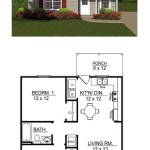How Do I Find the Original Floor Plan of My House for Free?
Discovering the original floor plan of a house can be invaluable for various reasons. Whether planning renovations, tracing the history of the property, or simply satisfying curiosity, having access to the initial architectural drawings provides a detailed understanding of the building's structure and design. Obtaining these plans without incurring costs requires strategic exploration and resourcefulness. This article outlines several avenues to investigate in the pursuit of acquiring a free copy of a house’s original floor plan.
Leveraging Local Government Resources
The most common and potentially fruitful starting point in searching for a house's original floor plan lies within the local government's records. Municipalities often maintain archives related to building permits, construction plans, and property assessments. These records are typically public and accessible, although the ease of access and format may vary significantly depending on the location and the sophistication of the record-keeping system. The steps described below detail how to investigate these resources.
Contacting the Building Department: The first step is to contact the local building department or planning office. This department is responsible for issuing building permits and ensuring that construction projects adhere to local building codes. They often retain copies of submitted plans, including floor plans, as part of the permit application process. It is essential to contact the specific department that handles building permits, as other departments might not possess the required information. When contacting the building department, it is crucial to provide the property address, the year the house was built (if known), and any other relevant information, such as the name of the original owner or builder. This will help the department’s staff locate the correct records more efficiently.
Accessing Online Records: Many municipalities are transitioning to digital record-keeping systems, making it easier to access public records online. Check the local government's website for online databases or search portals that allow users to search for building permits and property information. These online systems may offer the ability to view and download scanned copies of original floor plans. Search terms related to "building permits," "property records," "assessment maps," or "planning documents" may lead to the relevant online resources. If online access is available, familiarize yourself with the search functionality and any specific instructions provided for accessing and downloading documents. It is important to note that older records may not be digitized and may require in-person visits to access.
Visiting the County Recorder's Office: The county recorder's office or land registry is another valuable resource. This office maintains records of property ownership, deeds, and other legal documents related to real estate. While they may not always have floor plans, they may hold information about the original builder or architect, which can be useful in further investigation. Deeds may sometimes refer to plats or maps that include basic outlines of the property and structures. Accessing the county recorder's office records usually involves visiting the office in person or using its online search portal, if available. Staff at the recorder's office can guide you through the process of searching for relevant documents and provide assistance in interpreting the information.
Exploring the Assessor's Office: The assessor's office is responsible for determining the property's value for tax purposes. They maintain records that include details about the property's size, features, and sometimes, basic floor plan diagrams. While these diagrams might not be as detailed as architectural plans, they can provide a general layout of the house and its dimensions. These records are typically public and accessible through the assessor's office website or in person. Similar to other government offices, providing the property address and any other relevant information will aid in locating the correct records.
When accessing government records, be prepared to encounter varying levels of organization and accessibility. Older records may be stored in physical archives and require significant effort to locate. Digitized records may be incomplete or poorly scanned. Patience and persistence are key when navigating these resources.
Consulting Historical Societies and Libraries
Beyond government resources, local historical societies and libraries can be invaluable sources of information about the history of a house and its original floor plan. These institutions often collect and preserve historical documents, photographs, and other materials related to the local community. While they may not directly possess copies of floor plans, they may hold related information that can lead to their discovery.
Historical Societies: Contacting the local historical society is an excellent step in researching a house's history. Historical societies often have extensive archives of local history, including maps, photographs, and documents related to specific properties. They may have information about the architects or builders who worked in the area and may even have copies of original house plans or photographs that show the house's original layout. Historical society staff and volunteers are typically knowledgeable about local history and can provide valuable insights and guidance in your search. Be prepared to provide as much information as possible about the house, including its address, approximate construction date, and any known previous owners. It is important to note that historical societies are often volunteer-run organizations with limited resources, so it may take some time to receive a response or schedule a visit.
Public Libraries: Public libraries can also be valuable resources for historical research. Libraries often have local history collections that include books, maps, and other documents related to the community. They may have directories of historical architects and builders, which can help identify the person who designed the house. Some libraries also have access to online databases of historical records, such as census data and property records. Librarians can assist in navigating these resources and provide guidance on research techniques. It is also worthwhile to check for architectural journals and magazines that might have featured the house or similar houses in the area. These publications may contain floor plans or detailed descriptions of the house's design.
University Archives: Local universities, particularly those with architecture or history departments, may also have relevant archives. University archives often collect architectural drawings and plans as part of their research collections. Contacting the university's archive or special collections department and inquiring about their holdings related to local architecture could yield valuable information. It is also possible that a professor or student in the architecture department may have conducted research on local housing styles and have access to historical plans.
When consulting historical societies and libraries, be prepared to spend time reviewing documents and conducting research. These institutions may have limited staff and resources, so it is important to be patient and persistent. Providing as much information as possible about the house will help the staff and volunteers assist you in your search.
Exploring Alternative Avenues
If the above resources yield no results, there are several alternative avenues to explore in the search for a house's original floor plan. These options may require more creativity and persistence, but they can sometimes uncover unexpected sources of information.
Contacting Previous Owners: Reaching out to previous owners of the house can be a valuable way to obtain information about its history and potential floor plans. Previous owners may have retained copies of original documents or may have memories of renovations or alterations that can shed light on the house's original layout. Contacting previous owners can be challenging, as it requires tracking down their current contact information. However, online search tools, social media platforms, and property records may provide clues. When contacting previous owners, be polite and respectful and explain your reasons for seeking information. They may be willing to share their knowledge or provide access to documents they have retained.
Searching Online Real Estate Listings: While not a source for original floor plans, archived real estate listings can sometimes contain floor plans that may offer a glimpse into the layout of the home at a particular point in time. Websites that archive past real estate listings may have photos and even floor plans from previous sales. These listings can be found on real estate websites, archive.org (the Wayback Machine), or even local newspaper archives. While these floor plans might not be the original, they can be a helpful resource if the original is unobtainable. They might also reveal changes made to the house over time, offering insights into its evolution.
Checking with Architectural Firms: If the house was designed by a known architect or architectural firm, contacting the firm or its descendants may be a potential avenue. Architectural firms often maintain archives of their past projects, and they may have copies of original drawings and plans. Researching the history of the house and identifying the architect or firm involved in its design can be a time-consuming process, but it may be worthwhile if other resources have been exhausted. When contacting architectural firms, be prepared to provide as much information as possible about the house, including its address, construction date, and any known details about the design. It is important to note that architectural firms may charge a fee for accessing their archives or providing copies of documents.
It is important to acknowledge that obtaining a free copy of a house's original floor plan is not always guaranteed. The availability of records varies significantly depending on the location, the age of the house, and the record-keeping practices of local government agencies and private institutions. However, by systematically exploring the resources outlined in this article, individuals can significantly increase their chances of successfully uncovering the desired information. Persistence, patience, and a willingness to explore unconventional avenues are key to achieving success in this endeavor.

Free Floor Plan Creator Design 2d 3d Layouts Easily

Free Floor Plan Creator Design 2d 3d Layouts Easily

Blueprint Maker Free App

Free Floor Plan Creator Design 2d 3d Layouts Easily

Free Simple Two Story House Plans Edit Available

Draw Floor Plans In Minutes Create 2d And 3d

How To Draw Blueprints For A House With Pictures Wikihow

Where To Get House Plans Tips For Homeowners

How To Read Floor Plans 8 Key Elements A Plan Foyr

12 Examples Of Floor Plans With Dimensions
Related Posts








